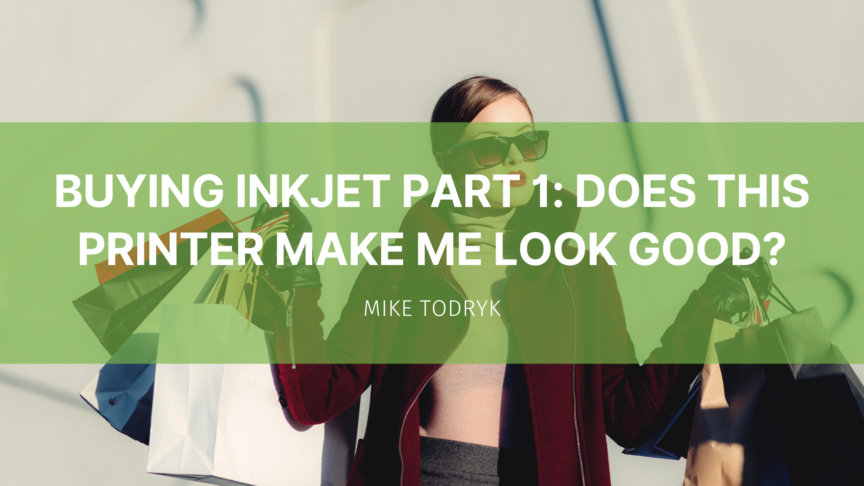Identifying a personal style can be a vexing pursuit. But at its core, all we really want to know is if what we are wearing is a good fit. We might be asking this question at a big box department store, with tons of choices and all the latest trends. Or at a small boutique, with specialized attention to help deliver a custom fit. Either place can help you find what you need, depending on your end goal.
What does this have to do with printing, you might be thinking? When making a multi-million dollar decision on buying a new inkjet printer, you need the best fit for your company. At IWCO, we are focused on what we call “Making Better Happen” for our clients, and having the right equipment to accomplish that is crucial. In this two-part series, I am going to talk about how we discover new equipment and the questions we ask to find the best fit for us. Understanding your own needs is very important. No one wants to make a multi-million dollar oops.
Understanding Your Style
When it comes to buying inkjet, one of the most important ways to ensure that you have a great fit is to understand what you are trying to accomplish. Like a shopper just going along with the latest trends, many bad decisions are made when you don’t really understand your own goals and processes and just rely on salesperson rhetoric. Make sure you understand, and clearly define, your requirements.
Understand how different stocks are going to affect the inkjet output and how that compares to what you currently are printing. If you are printing on an iGen or Indigo on plain uncoated paper, think about how inkjet would look on that same type of stock. All technologies have strengths and weaknesses. Understanding and documenting your expectations will help you properly assess what inkjet devices might best meet those expectations.
Trade Shows
With requirements and expectations in place, we can start shopping. Doing preliminary research on the internet can narrow down your search, but eventually you may want to see things face to face. My preferred method is a vendor site visit, which I will discuss later, but trade shows can be a good source of initial information. Think of it like shopping at a big box store with lots and lots of racks showing off all kinds of different things. Trade shows are a great way to see the latest and greatest technology and offerings. They can also be a way to narrow down your choices based on your requirements and are a great place to network and reconnect with people.
While trade shows won’t necessarily provide access to the depth of information necessary to make a decision, they may help you eliminate some options that might have looked promising, but in the cold, hard glare of the artificial trade show lights, are clear they aren’t going to work. Because trade shows trend to be annual or seasonal, the timing might not be right for your decision making.
OEM Visits
Once you’ve narrowed down the field, nothing beats scheduling a visit and spending a day or two learning about a particular printer, putting it through its paces and throwing some test files at it. It’s helpful to have technical people there to answer questions, rather than just sales teams (nothing against sales, but some topics are better handled with subject matter experts).
I recommend creating a set of test files in advance that touch on the things that are important to you. IWCO’s test files include several multi-color images that we can use to compare printers and stocks. For example, we have test files to assess gray balance and G7. We also have a heavy coverage testing file to see how the printer holds up to heavy ink loads, both simplex and duplex. We print as much as possible, sending in multiple rolls and doing longer runs, to see how things behave under stress. We are trying as best as we can to test under real production requirements. Any printer can spit out a few pretty pictures. But can it spit out thousands (or millions)?
Next Steps
As I hope you can see, buying an inkjet printer is a process that requires a lot of engagement on your part. Knowing what you are looking for and finding printers that can fit into your process is vital. And you have to ask a lot of questions. What questions should I ask, you say? Well, that is a topic for my next article. Stay tuned for Part 2.
As always, if you have any questions in the meantime, please do not hesitate to reach out to me.

